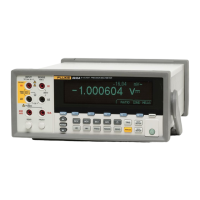87
Appendix C
Network Considerations
Introduction
This tutorial provides information on commonly used network communication
technology, and describes how to get started using the Meter. It is not necessary to know
the details of network communication methods in order to use the Meter effectively. The
Meter and host computer software use Ethernet wiring and low level protocols and
TCP/IP high level protocols, and the UNIX telnet application interface program. These
are all public domain, non-proprietary standards with multiple-company support. Use of
these non-proprietary protocols and hardware ensures the Meter and software will operate
on most installed networks and have the lowest possible cost using off-the-shelf
commercial networking products. Read “Network Primer” later in this Appendix for
more information on these standards.
Your Meter and Your Network Administrator
Before you place the Meter on your company network, you need to coordinate with your
Network Administrator. Specifically, before installing and setting up your Meter and host
PC, you need to ask the following questions:
1. Does the network allow static addresses? If so, what values should I use for my IP
addresses, and Subnet Mask? Does the Socket Port Number need to be changed from
the default (3490)?
2. Does the network contain more than one subnet? If so, what is the IP address of my
default gateway or router device?
3. Will all the routers route IP packets?
4. What are my domain and host names (optional)?
The minimum information you need to get is the IP Addresses for each meter. If your
network contains more than one subnet and you want to place the host PC and one or
more instruments in different subnets, you must also set the default gateway address and
subnet mask on the Meter and the host PC.
The Meter may use DHCP to get an IP address, subnet mask, and default gateway
address automatically on the network.

